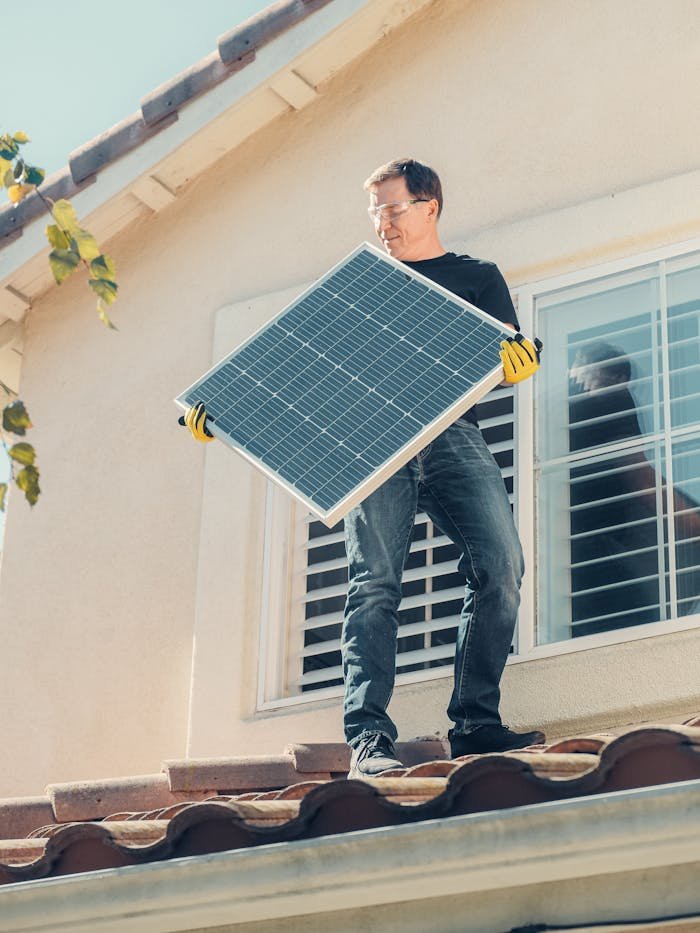Thinking about going solar in Arizona? You’ve probably heard the phrase “AZ solar incentives” thrown around a lot—and for good reason. The Grand Canyon State is one of the best places in the country to tap into sunshine and turn it into savings. But with so many rebates, credits, and programs available, it can feel like you’re trying to read a map with no compass.
Don’t worry—we’ve got your back. Whether you’re in Phoenix, Tucson, Mesa, or anywhere across the Valley, this guide will break down exactly how you can take advantage of Arizona solar incentives in 2025 and beyond.
Why Going Sun-Driven Makes Sense Here
With over 300 days of sunshine a year, this region is one of the best places in the country to use sunlight to your advantage. Add to that:
Soaring summer utility bills
Modern technology that works better than ever
Local and national programs that reward those who make the switch
And suddenly, that bright sky isn’t just something to squint at—it’s an opportunity.
What Types of Perks Are Available?
There’s a mix of programs at both the federal and local levels that aim to make the transition more accessible:
Federal Tax Credit
State-Level Tax Breaks
Sell-Back Credits from Utility Providers
Company-Specific Incentives
Tax Exemptions on Sales and Property Value
Financing Plans for Equipment and Setup
Let’s go through them, one at a time.
1. National Tax Credit for Clean Upgrades
The federal government offers a generous program for folks who want to go sun-driven. Known as the Investment Tax Credit (ITC), this gives back 30% of your total project cost come tax season.
How it works:
Total project cost: $25,000
Credit you can claim: $7,500
This credit directly lowers your tax bill
Any unused portion rolls over to the following year
Note: You must be the owner of the system. Leasing doesn’t qualify.
2. State Tax Credit Just for Residents
The state offers its own separate perk. If you’re a full-time resident, you can claim 25% of your setup cost, up to $1,000.
It’s a one-time credit
It applies to your state income taxes
You must use it on your main residence
Every bit counts—and this one stacks right on top of the federal credit.
3. Trade-Back Programs with Your Utility Provider
Even though the old system of full-value trade-ins (net metering) is mostly phased out, there are still savings to be had.
Here’s how it works now:
You produce more than you use during the day
The extra goes back to the grid
Your utility company gives you a credit per unit returned
While the value may be slightly less than what you pay per unit used, those credits can offset your monthly bill significantly—especially during peak sunshine months.
What the Big Providers Offer:
| Provider | Credit Structure | What to Know |
|---|---|---|
| APS | Flat rate per kilowatt | Slightly less than retail |
| SRP | Time-of-use based pricing | Evening rates may cost more |
| TEP | Export-based credit | Around 7–8 cents per unit exported |
Ask your provider what’s current. Rates are reviewed annually.
4. Company-Specific Perks
While statewide programs are valuable, don’t forget to ask individual setup providers what kind of deals or discounts they offer.
Many local companies offer:
Cash rebates
Referral discounts
Battery backup bonuses
And in some regions, extra incentives are available for veterans, seniors, or low-income households.
5. Tax Exemptions That Work in Your Favor
There are two big ways your tax situation gets easier when you go sun-based.
1. No Sales Tax on Equipment
You’re exempt from paying the usual 5–6% sales tax on your new gear. For a $20,000 system, that’s around $1,200 saved instantly.
2. No Extra Property Tax
Even if your place is worth more after adding the setup, the state won’t let your property taxes increase because of it. You gain value—but not a bigger tax bill.
6. Financing That Doesn’t Break the Bank
Worried about upfront costs? No problem. There are several financing options that let you get started without paying anything today.
Common Options:
Personal loans with fixed rates
Zero-down financing through providers
Special programs through some counties or cities (like PACE)
You’ll likely end up paying less each month than you’re used to shelling out for electric bills—and building long-term value at the same time.
Real Savings: An Example
Let’s say you’re working with a $24,000 project:
| Description | Savings |
|---|---|
| Federal Credit (30%) | $7,200 |
| State Credit (25%, max $1k) | $1,000 |
| Sales Tax Exemption | ~$1,300 |
| Property Tax Savings | ~$2,500 (10 yrs) |
| Total Potential Benefit | $12,000+ |
That’s about half your total cost knocked down by incentives alone.
Ready to Take the Next Step? Here’s What to Do:
If you’re feeling like this is the year to make the shift, here’s your simple action plan:
Step 1: Get a Personalized Quote
Reach out to a local company with experience in desert climates. Let them assess your rooftop and give you the numbers.
Step 2: Ask About Incentives
A good team will help you understand exactly what you qualify for—federal, state, and local.
Step 3: Pick the Best Payment Option
Cash? Loan? Zero-down? There’s no wrong way—as long as it fits your monthly budget.
Step 4: File the Right Forms
You’ll need to file a couple of tax forms for the credits, but don’t worry—your provider will help with that.
Step 5: Enjoy Lower Bills and Bigger Value
Once you’re set up, you’ll start seeing the savings roll in and your property value climb.
Final Thoughts: A Bright Future with Big Perks
There’s a reason more folks are going sun-powered each year—it just makes sense. From massive tax credits to long-term savings, these programs give everyday families a way to make a lasting upgrade without the financial stress.
And in a place where the sky stays clear for most of the year, there’s no shortage of sunshine to work with.
Whether you’re ready to act today or just thinking it over, the important part is knowing your options and not leaving money on the table.



